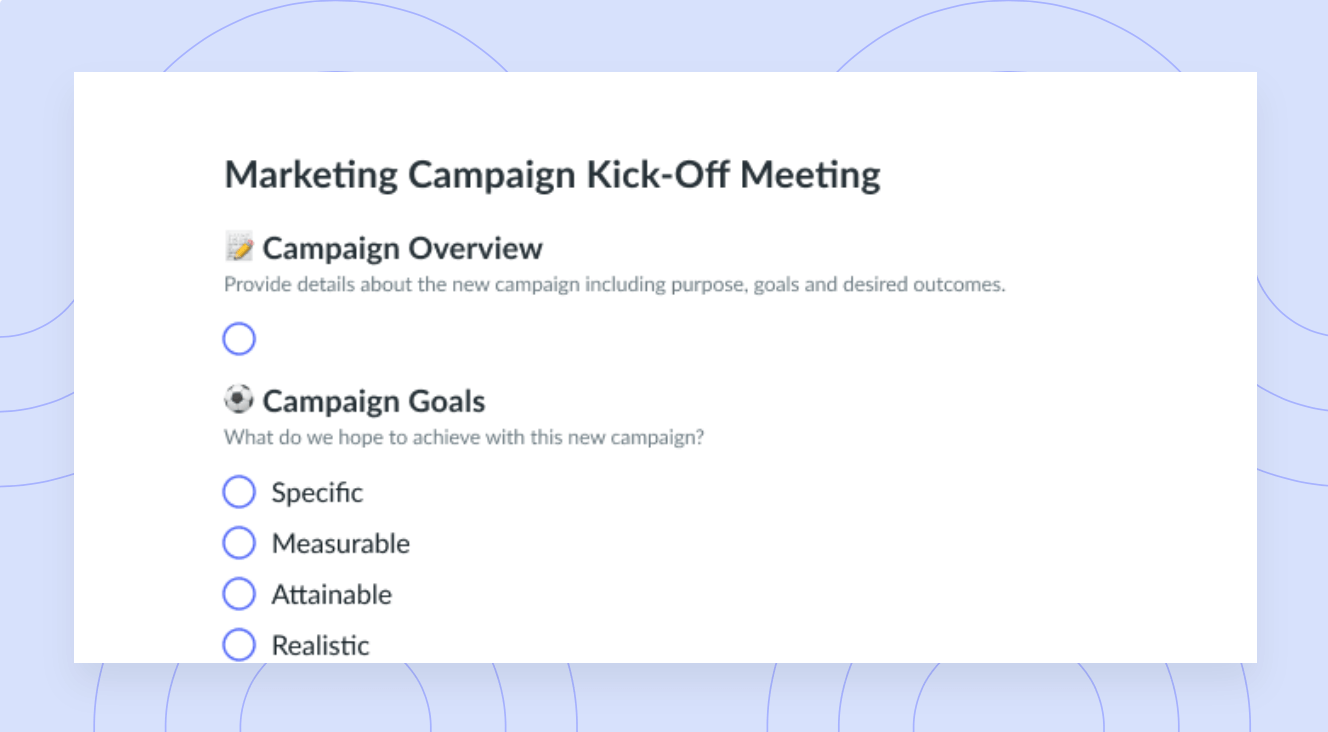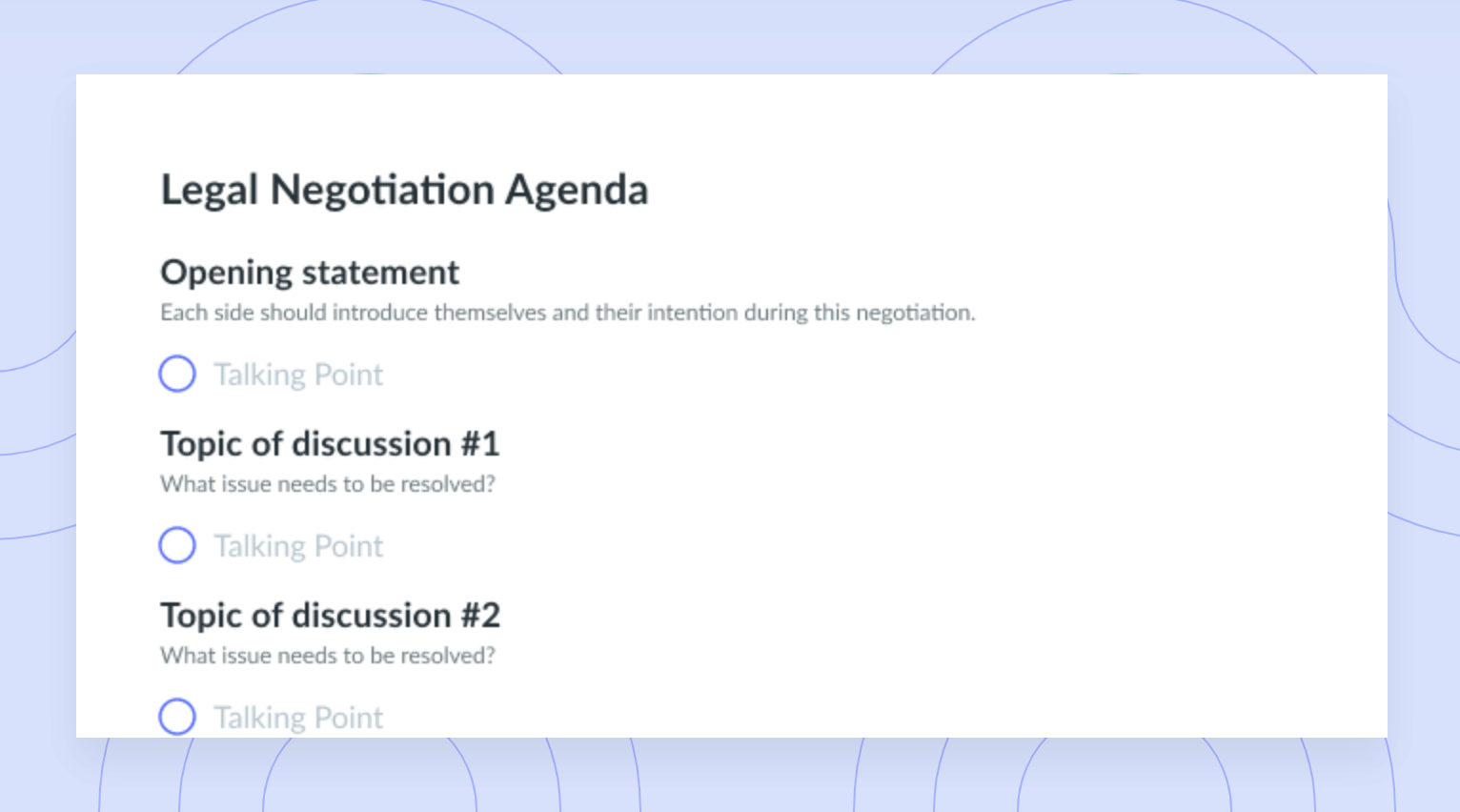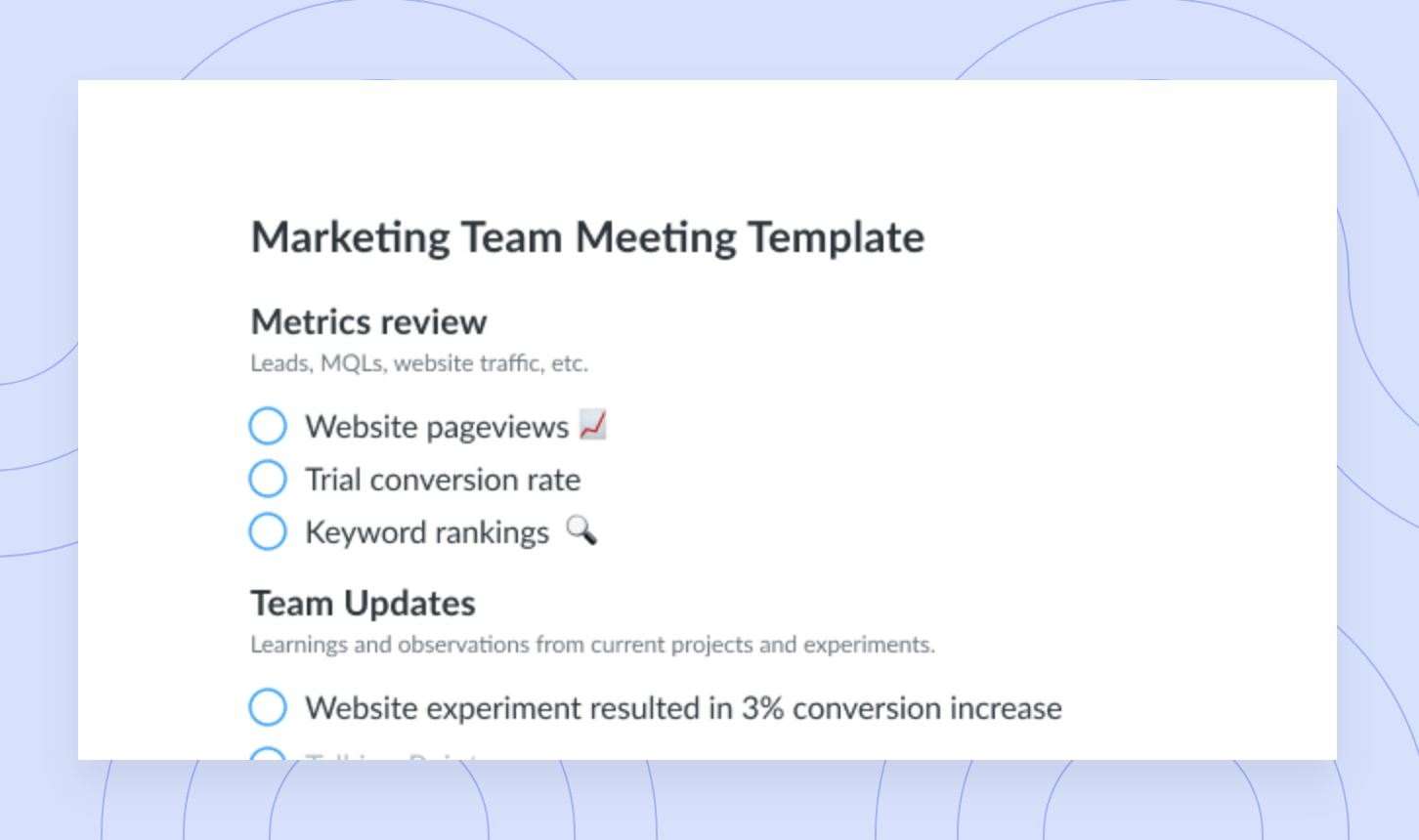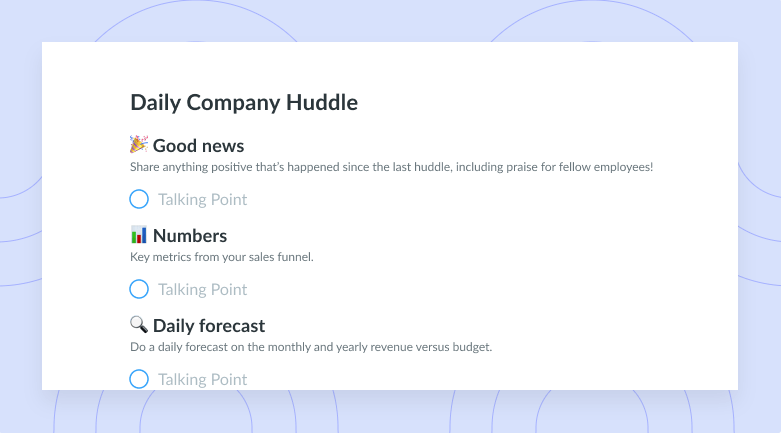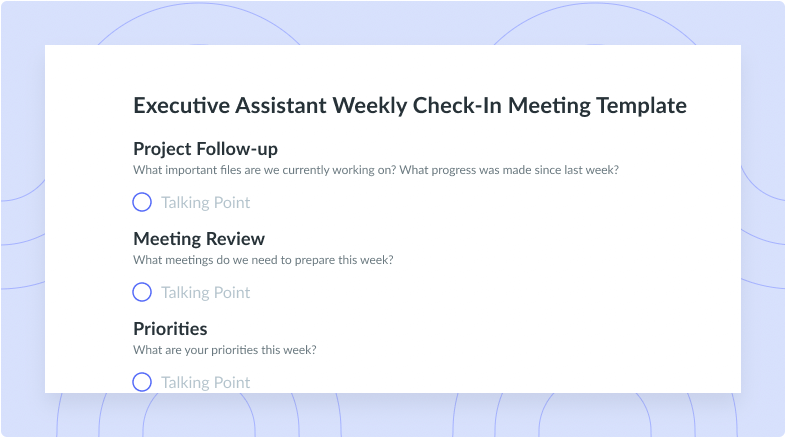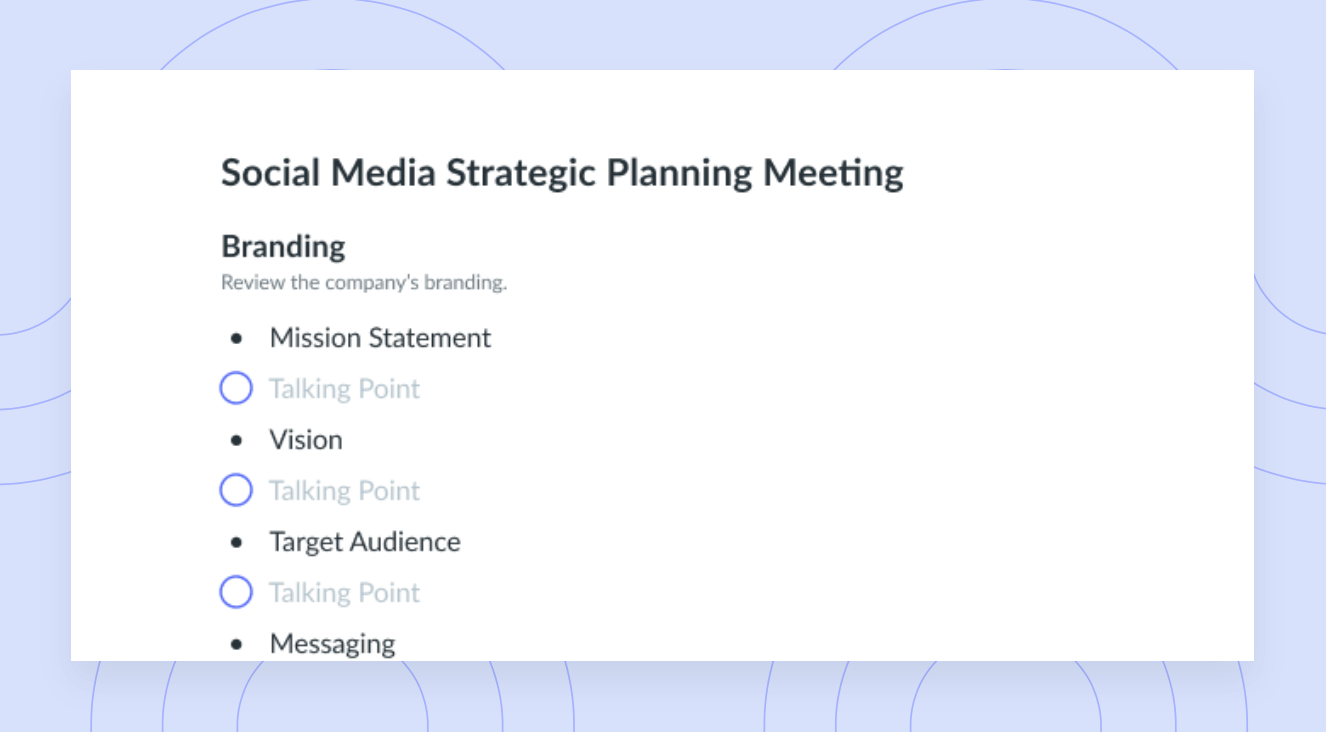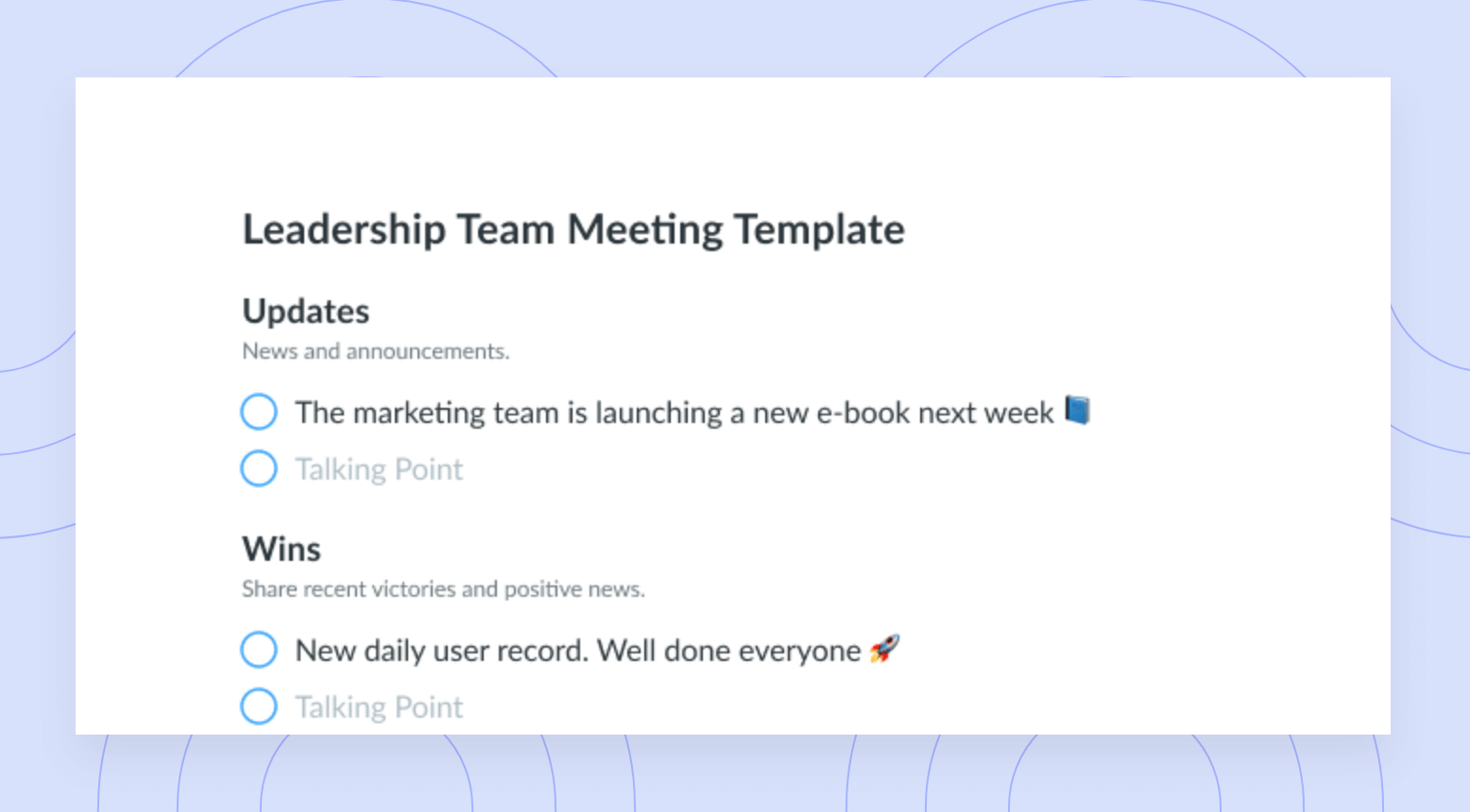Pointless Meetings: Here’s How to Spot Them and Avoid Them
A pointless meeting can get your team frustrated about all your future meetings. Use this in-depth guide to avoid pointless meetings.
The last thing you want is for your team to find your meetings unnecessary. That’s because, when you do it right, gathering team members of all backgrounds and experiences can lead to some of your best ideas. Pointless meetings block that while lowering engagement, making your team less effective. That said, unproductive meetings aren’t too difficult to avoid if you have the proper know-how – which is precisely what this guide aims to teach you.
- How can you tell that a meeting is pointless?
- The consequences of pointless meetings
- How to avoid attending a pointless meeting
How can you tell that a meeting is pointless?
The first step to saying goodbye to bad meetings forever is recognizing them in the first place. This may seem like an easy step, but the signs of bad meetings can actually be easy to miss. They include the below.
- You could share everything from the meeting in another way
- There are too many people in the room
- There aren’t many RSVPs
- They’re repetitive
- Your goals and motivation are unclear
1You could share everything from the meeting in another way
Whether or not your meetings are great, they’ll take up a significant chunk of an employee’s workday. They can start to take up even more time as your team gets bigger. That can pose a problem.
The more people at your meetings, the less time you have for productive conversations between team members. You might wind up sharing important information but then having no time to talk about it. That means you should ditch meetings for another way to get the point across. Try moving company updates to email or sending status updates in Slack messages. This way, your team can focus on the news when they have the time and capacity for it.

Meetings worth showing up to
A well-run meeting can foster communication and collaboration by including an agenda the whole team can contribute to. Stop having pointless meetings by using a tool like Fellow!

2There are too many people in the room
In general, the number of people at your meeting reflects whether it’s good. That’s because good meetings get everyone talking and collaboratively brainstorming new ideas. But the more voices you add to the conversation, the more each one gets drowned out. And with that, some of your best ideas get buried too.
J. Richard Hackman, a Harvard professor of social and organizational psychology, once found that four to six team members is the ideal meeting size. You can probably go a bit over that, but with each additional person, you might experience some diminishing returns.
3There aren’t many RSVPs
Unless your meeting is mandatory, you’ll likely be waiting for RSVPs after sending out your meeting invites. It should come as no surprise that a low number of RSVPs can tell you that your team sees your meetings as pointless. Think about it like this: Meetings always take up part of a team member’s workday. If most people don’t think attending your meetings is worth the missed work, it might be time to rethink your strategy.
4They’re repetitive
The structure of your meetings might change as your team and organization grows. Maybe there are more people in the room, or maybe you have more meetings. Neither is great, but the latter can do more harm. Even if each meeting in your week is about different topics, you could easily find yourself repeating the same information to different people. That’s more likely to keep your wheels spinning than moving forward. If your team seems stuck in a rut, then it’s probably time to start consolidating your meetings.
5Your goals and motivation are unclear
Effective communication is easier if your meeting’s goals and objectives are obvious. You should really take the time to define this all – goals that seem fine while you’re planning can be vague in practice. If your meetings involve more time describing your goals than achieving them, it might be time to rethink how you plan your meetings.
The consequences of pointless meetings
Now that you know the signs of pointless meetings, it’s time to look at exactly why they’re bad. This way, you can solve the issue of unproductive meetings sooner rather than later.
- Little or no time for actual work
Fill your team’s busy schedules with unproductive meetings, and they’ll have little time remaining for their actual work. Sure, weekly meetings can positively affect everyone’s tasks outside the meeting room without causing too much disruption. But going to a meeting and doing work often require completely different mindsets – it takes time to switch from one to another. Even if a team member goes right back to work, they usually won’t be at 100%. That’s even worse when you have constant pointless meetings.
- Blocked workflows
Given how much time it can take for team members to switch from meeting mode to work mode, they might make trade-offs about their work. The next meeting on their schedule can dictate when and how they do their work. A bunch of pointless meetings can make that problem even worse. It’s tough to build a proper workflow between one pointless meeting after another. That can lead to tasks getting pushed aside or dropped.
- More stress
If there’s one killer of productivity, it’s too much stress – and having enough pointless meetings in a row can get you right there. Your team only has so much energy to spare before they need to rest and replenish. A schedule packed with pointless meetings doesn’t give them the chance to fully recover, and that makes each meeting afterward harder to sit through. Eventually, your team might just dread your meetings, and good luck getting great collaboration out of that.
- Reduced employee engagement
The culture within your meetings often mirrors your whole organization’s culture. At the very least, it represents your organization’s values. A long string of pointless meetings that pull team members away from their work could make them feel like the organization just doesn’t value them.
Employee engagement usually starts to suffer when your team gets into that mindset. Not feeling valued can make your team feel disconnected from their work, which can lead to lower productivity and work quality
How to avoid attending a pointless meeting
Knowing how to recognize the signs and impact of pointless meetings is a good first step. An even better step is avoiding pointless meetings in the first place. Below are several tips and tricks to avoid pointless meetings and make your team gatherings as productive as possible.
- Learn to use other methods of information sharing
- Only invite people who can add value
- Make sure the meeting is actually necessary
- Create a meeting agenda
- Lead the meeting before, during, and after
1Learn to use other methods of information sharing
As important as meetings are, they aren’t the end-all-be-all for company updates. For example, as your organization gets bigger, you could start to have meetings that are too big to be productive. If you keep that up instead of figuring out another way to do things, you’ll get stuck in the mud. But, not every update has to come with a meeting. You have other options – and you should learn how to use them.
Asynchronous meetings and communication can be a great option on this front. That’s basically a fancy way of saying that you can move your updates and conversations to email, Slack, or other non-real-time communication channels. Since not every update comes via meetings, you can put fewer meetings on the schedule and focus on running the remaining ones more efficiently. The chances of pointless meetings will go way down from there.
2Only invite people who can add value
Going back to J. Richard Hackman’s guidelines, you want four to six people in a meeting for best results. With this many people, you get a broad enough range of ideas and experiences to figure out your next steps while hearing everyone’s input. But the more people you invite to the meeting, the less productive it’ll be. A good rule of thumb is only to invite people who can directly contribute to your meeting objectives.
You should make sure everyone at your meeting can offer perspectives that are relevant throughout the meeting. If not, a team member could say their piece and end up just sitting there for the rest of your meeting. That’s all time they could’ve spent doing other work.
3Make sure the meeting is actually necessary
One of the best ways to not run a pointless meeting is to make sure it has a point in the first place. Before you start planning your meeting, think about why you’re holding it – are you going for conversation or just information-sharing? Are you sure the issue at hand requires a second opinion? If so, do you need to get that face-to-face? Or can you stick to phone or email?
4Create a meeting agenda
Many pointless meetings lack structure and control. There’s no effort behind them to build any sort of collaborative environment, so your more outgoing team members might speak way more. That’s a recipe for potentially shutting out your best ideas. In addition, without a proper meeting schedule, you might keep team members around for much longer than they’d like to stay. That can get them bored and frustrated, which can lower their morale.
A meeting agenda is a great solution. It can guide your meeting from start to finish with clear topics – and timeframes for each. This way, everyone stays on the same page and heads back to their desks at a reasonable time.
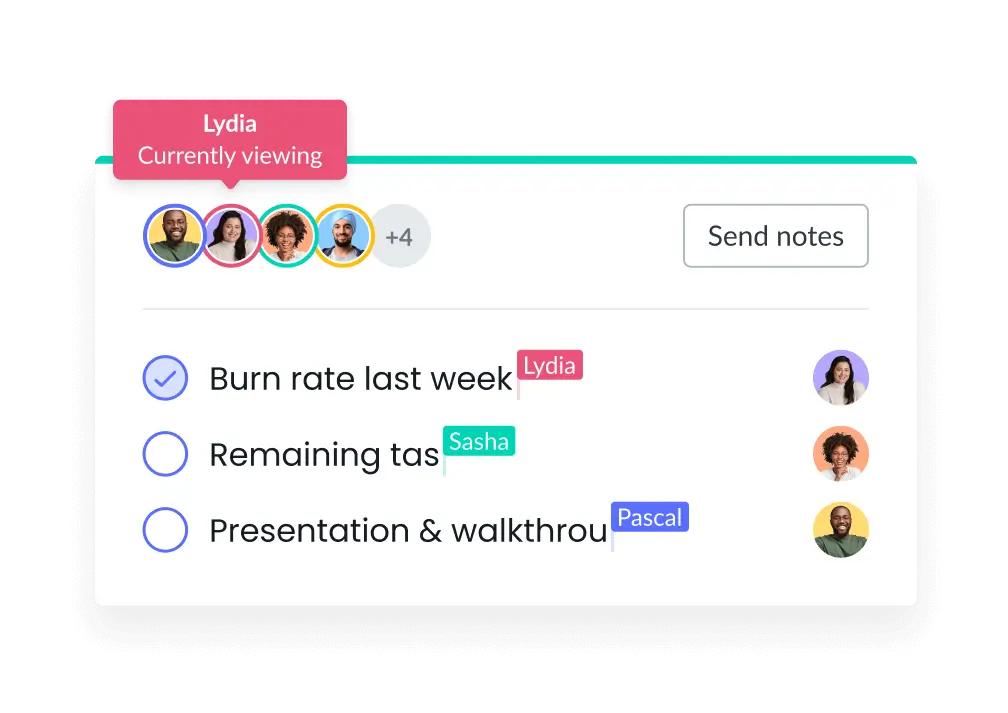
5Lead the meeting before, during, and after
It’s your responsibility to set up a great meeting and run it the right way. That starts beforehand with your meeting agenda and invites. It continues at the meeting, where you’ll guide everyone through the agenda and resolve conflicts. You should also gently encourage your quieter team members to share their ideas too. You can follow through on your meetings with real-time meeting action items and peer feedback post-event so that the next one is even better. As in, not pointless.
Get your meetings from pointless to essential
If too many bad meetings happen too often, they can hurt your whole organization. Your team can only sit in on a pointless meeting for so long before losing their motivation. The thing is, running better meetings is easier – and you can make it even easier with Fellow.
Through Fellow, you can encourage more collaborative meetings through several valuable features. Fellow allows for collaborative agenda creation, note-taking, and task assigning, with tools for getting feedback after your meetings. This way, you can stop pointless meetings at the door.









